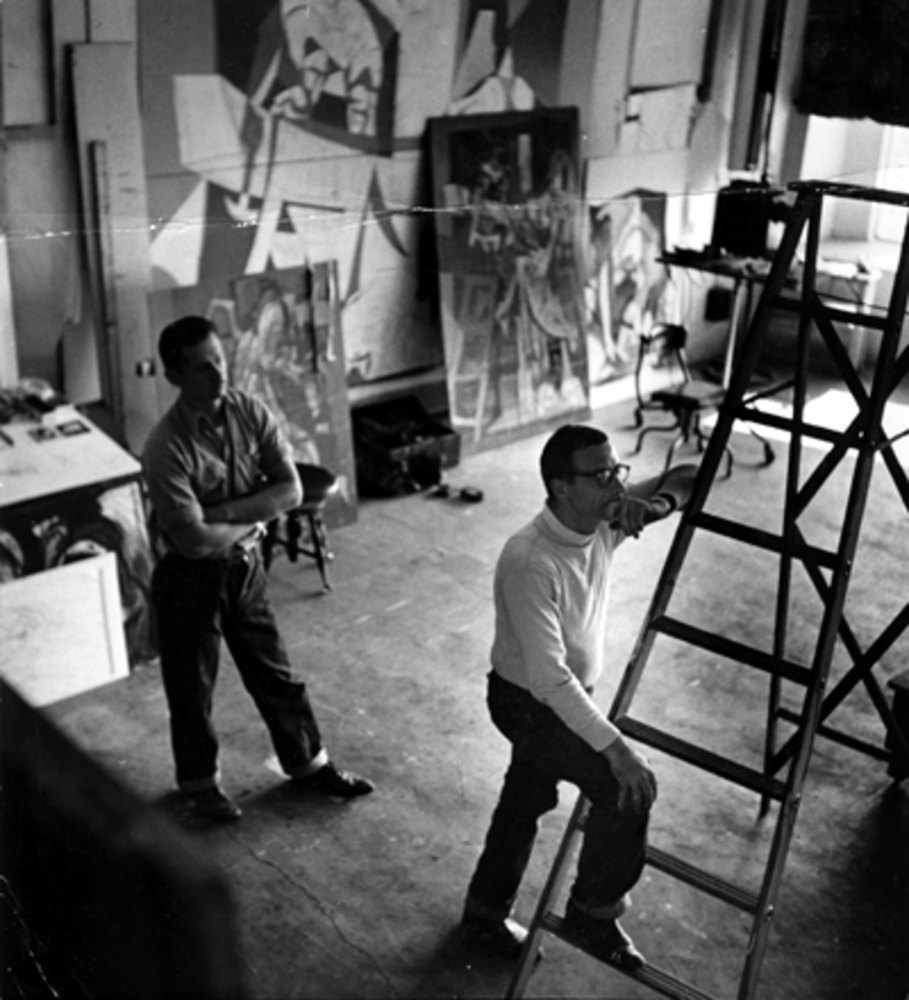Rico Lebrun on Color, Realism, and Artist’s Reception
By Richard Li
In a 1963 Artforum interview, Lebrun revealed his artistic principles and the nuanced relationship he shares with color. He expresses a profound affinity for the color black, characterized by its encompassing quality, containing the entirety of the color spectrum, and he contrasts it with what he perceives as superficial or decorative colors. Lebrun also delved into his studio practices, providing insights into his use of color, particularly emphasizing what he referred to as “inside body color" This, he suggests, is akin to the color within a fruit before exposure to the air altering its vibrancy. Lebrun acknowledges the difficulty of handling this type of color but asserts its logical place within the creative confines of the studio.
Regarding artist’s reception Lebrun suggested this idea of"spiritual devastation" which arises when artists, particularly those associated with the Avant Garde movements, are promptly accepted and patronized rather than being confronted or resisted. This leads to a contemplation of the consequences for artists who seek to inflict a "mortal wound" on conventional art and societal expectations, only to find themselves acknowledged and potentially stripped of the confrontational essence that defines their work.
In response to the question of equating "realism" with figure imagery, Lebrun challenges this notion, asserting that realism shouldn't be confined to the depictions of the human form. He emphasizes the authenticity inherent in portraying the figure, as it directly connects with our physical existence. While he doesn't dismiss the value of figurative art, Lebrun suggests that realism extends beyond figures. Even when painting a landscape, he expresses the belief that capturing the organic relationships between natural elements—rocks, trees, rivers—and the human body is crucial. Expanding the notion of realism to encompass a broader understanding of interconnected structures, highlighting the organic unity between the human form and the surrounding environment.
Relating to his 1947 painting “Terrified Woman With Child” at UMMA, it is clear that he conveyed deep and powerful emotions through the positioning of the figures with stark contrasts, deep shadows, or intense hues to amplify the sense of terror and urgency. Capturing the raw and visceral aspects of the human experience in his art without showing any facial expression. The palpable fear and vulnerability of the depicted figures transcend traditional boundaries, showcasing Lebrun's commitment to authenticity and the exploration of human connection beyond the confines of realism.
Created For
K-12 EducatorK-12 Student
Museum Visitor
UMMA Docent
UMMA Staff
University Faculty
University Student
Rate this Resource
AVG: 0 | Ratings: 0
& Author Notes
All Rights ReservedLast Updated
December 2, 2023 7:37 p.m.Report
Reporting Policy

